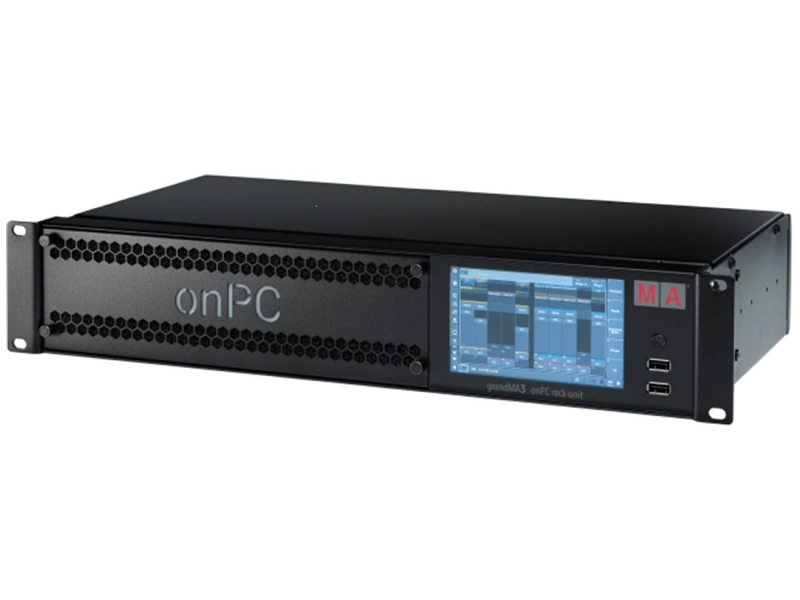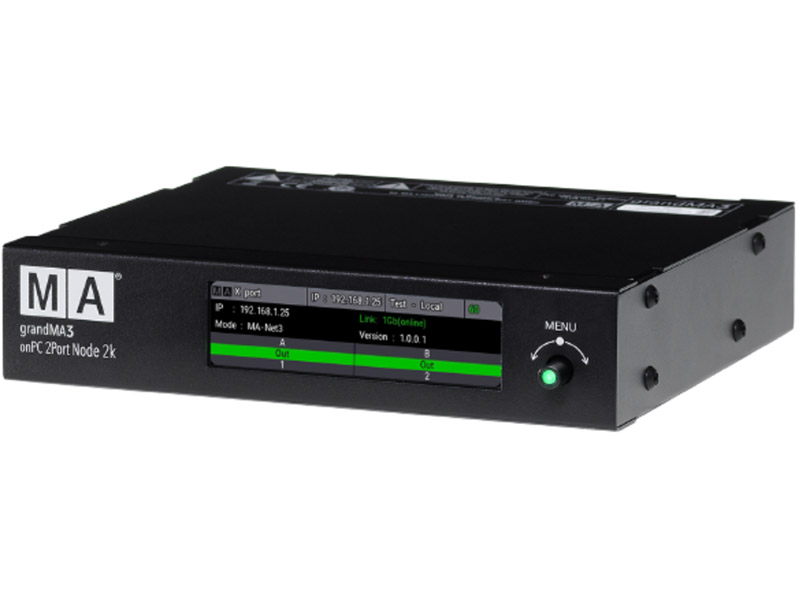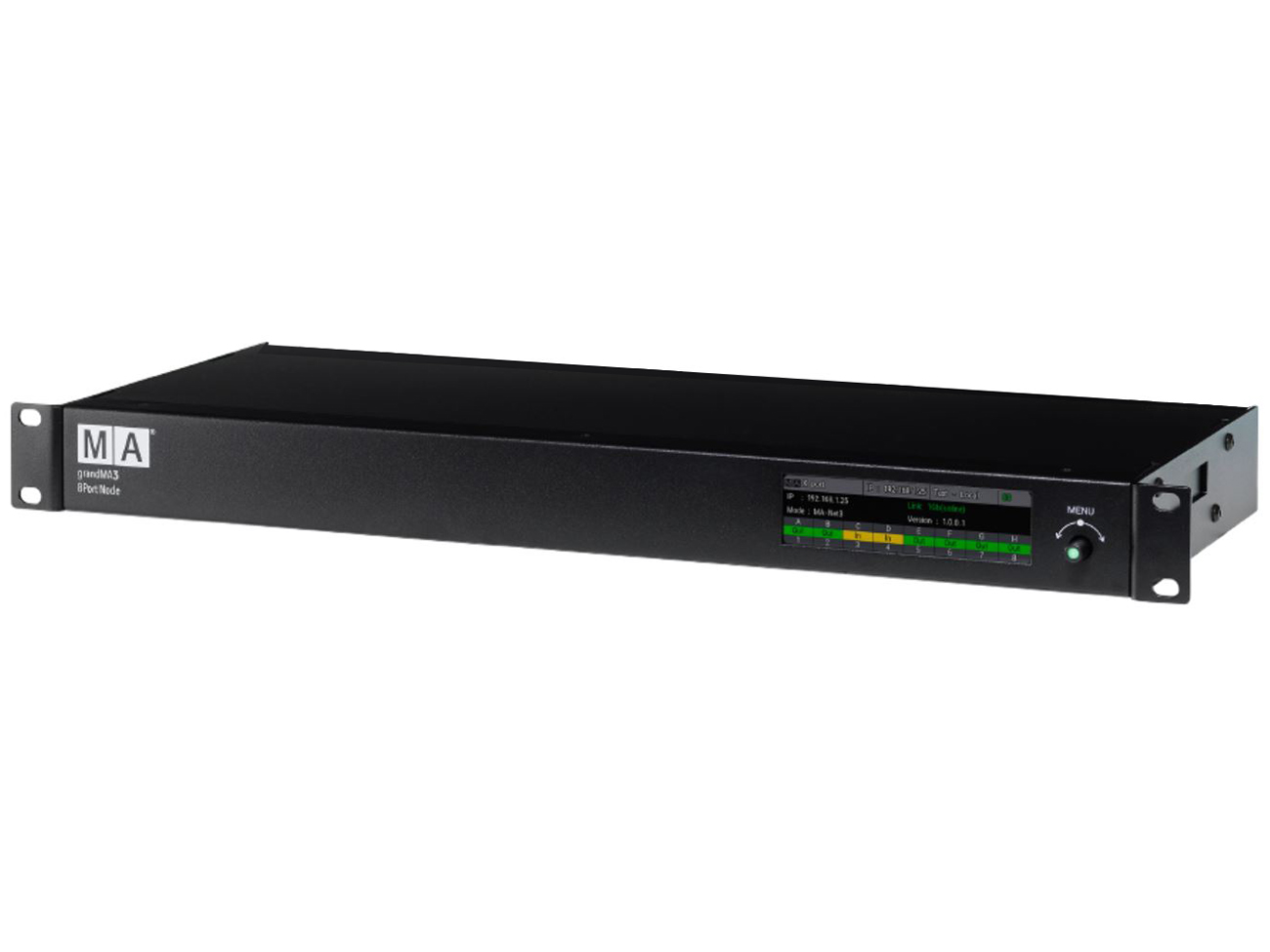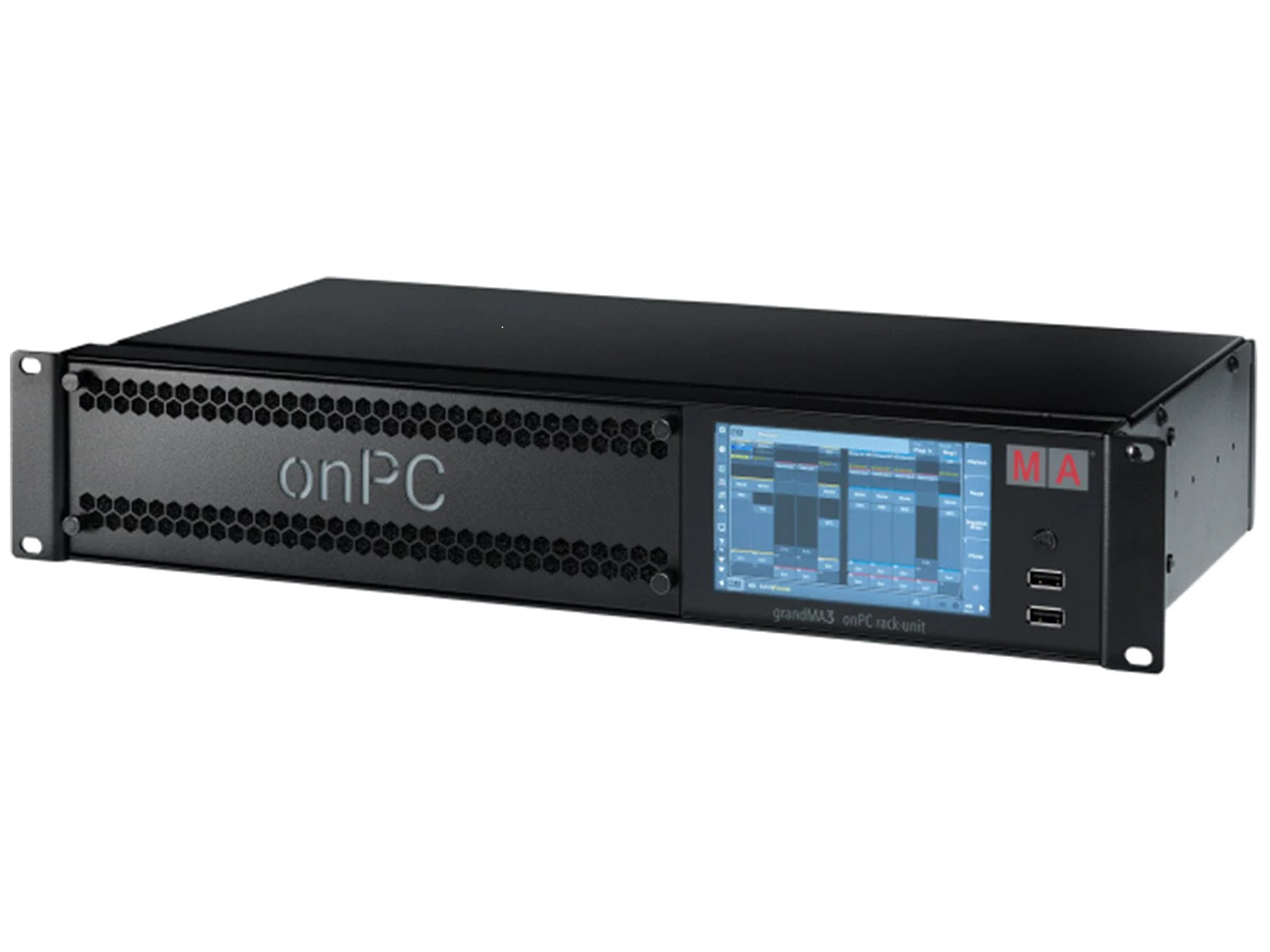Grand ma 3
13 September 2023

|
Are you ready to take your lighting effects to the next level? Look no further than the Grand MA 3, the ultimate tool for creating spectacular lighting experiences. Whether you're an experienced lighting designer or just starting out, the Grand MA 3 will revolutionize your lighting game. With its powerful features and intuitive interface, this lighting console allows you to unleash your creativity and design jaw-dropping effects. The Grand MA 3 gives you complete control over every aspect of your lighting setup, from color and intensity to movement and timing. But that's not all - the Grand MA 3 also offers advanced capabilities like pixel mapping, allowing you to create intricate patterns and visuals that will mesmerize your audience. And with its seamless integration with other lighting fixtures and devices, you can easily synchronize your lighting effects for a truly immersive experience. Don't settle for ordinary lighting effects. Discover the endless possibilities with the Grand MA 3. Your audience will be blown away, and you'll become the go-to lighting guru. Get ready to shine like never before! Understanding the basics of lighting design Lighting design is an art form that combines technical expertise with creative vision to enhance the overall atmosphere and mood of a space or performance. It involves the strategic placement and control of light sources to create specific effects and evoke desired emotions. In order to effectively use the Grand MA 3 and create stunning lighting effects, it's important to have a solid understanding of the basics of lighting design. This includes knowledge of different types of lighting fixtures, color theory, and the principles of light distribution. When designing lighting effects, it's crucial to consider factors such as the purpose of the space or performance, the desired mood or atmosphere, and the specific needs of the audience or performers. By carefully planning and executing your lighting design, you can create a truly immersive experience that complements the overall vision of your project. The Grand MA 3 provides lighting designers with a wide range of tools and features to bring their creative visions to life. Whether you're lighting a live concert, a theater production, or a corporate event, the Grand MA 3 has the capabilities to meet your needs and exceed your expectations. Features and capabilities of the Grand MA 3 The Grand MA 3 is packed with features and capabilities that make it the ultimate tool for creating spectacular lighting effects. Let's explore some of the key features that set this lighting console apart from the rest: Intuitive interface: The Grand MA 3 features a user-friendly interface that allows lighting designers to easily navigate and control their lighting setup. With its clear layout and intuitive controls, the console makes it easy to access and adjust all the necessary parameters for creating stunning lighting effects. Complete control: With the Grand MA 3, you have complete control over every aspect of your lighting setup. From color and intensity to movement and timing, you can fine-tune and customize your lighting effects to achieve the desired look and feel. This level of control allows you to create dynamic and impactful lighting designs that will captivate your audience. Pixel mapping: One of the standout features of the Grand MA 3 is its pixel mapping capabilities. Pixel mapping allows you to control individual pixels or groups of pixels on LED fixtures, giving you the ability to create intricate patterns, animations, and visuals. This feature opens up a whole new world of creative possibilities and allows you to add a level of detail and complexity to your lighting effects. Seamless integration: The Grand MA 3 seamlessly integrates with other lighting fixtures and devices, allowing you to synchronize your lighting effects for a truly immersive experience. Whether you're using moving lights, LED panels, or special effects devices, the Grand MA 3 can easily communicate and coordinate with these devices, ensuring that your lighting effects are perfectly synchronized and synchronized. Advanced effects engine: The Grand MA 3 is equipped with an advanced effects engine that allows you to create complex and dynamic lighting effects with ease. Whether you're looking to create smooth color fades, intricate movement patterns, or synchronized strobe effects, the effects engine of the Grand MA 3 can handle it all. With a wide range of built-in effects and the ability to create custom effects, you have the power to take your lighting design to the next level. |
 |
|
Setting up the Grand MA 3 console Setting up the Grand MA 3 console is a straightforward process that requires a few key steps. Follow these guidelines to get your console up and running in no time: Connect your fixtures: Begin by connecting your lighting fixtures to the Grand MA 3 console. This typically involves connecting the fixtures via DMX cables or using an Ethernet-based protocol such as Art-Net or sACN. Consult the user manual of your specific fixtures for detailed instructions on how to connect them to the console. Configure fixture profiles: Once your fixtures are connected, you'll need to configure their profiles within the Grand MA 3 console. Fixture profiles provide the console with information about the fixture's capabilities, such as its DMX address, available parameters, and default settings. You can either choose from a library of pre-existing fixture profiles or create custom profiles for fixtures that are not included in the library. Patch your fixtures: After configuring the fixture profiles, you'll need to patch your fixtures to specific DMX addresses within the console. This step ensures that the console knows which fixtures are connected and how to control them. Assign each fixture a unique DMX address and make sure they are correctly patched in the console's patch window. Set up your network: If you're using an Ethernet-based protocol like Art-Net or sACN, you'll need to set up your network to enable communication between the Grand MA 3 console and your fixtures. This may involve configuring IP addresses, subnet masks, and other network settings. Consult the user manual of your console for detailed instructions on how to set up your network. Configure your control surface: The Grand MA 3 console comes with a control surface that allows you to interact with the console and control your lighting setup. Depending on the model of your console, the control surface may consist of physical faders, buttons, and touchscreens. Configure the control surface to your liking, mapping specific functions and parameters to the physical controls for easy access during live operation. By following these steps, you'll have your Grand MA 3 console set up and ready to create spectacular lighting effects. Take the time to familiarize yourself with the console's interface and controls, and you'll be well on your way to unleashing your creativity and designing jaw-dropping lighting effects. Programming lighting effects with the Grand MA 3 Programming lighting effects with the Grand MA 3 is where the real magic happens. Whether you're creating a simple color wash or a complex sequence of movements and effects, the Grand MA 3 provides you with the tools and flexibility to bring your vision to life. Here's a step-by-step guide to programming lighting effects with the Grand MA 3: Create a new cue: The cue is the basic building block of a lighting show. It represents a specific look or state of your lighting setup. To create a new cue, simply press the "New" button on the console's interface. Give your cue a descriptive name to easily identify it later. Adjust fixture parameters: Once you've created a new cue, you can start adjusting the parameters of your fixtures to achieve the desired lighting effect. This may involve changing the color, intensity, position, or any other parameter of your fixtures. Use the console's interface to select the fixtures and adjust their parameters accordingly. Record the cue: After adjusting the fixture parameters, it's time to record the cue. Press the "Record" button on the console's interface and select the cue number and playback type. The cue will be stored in the console's memory and can be recalled later during live operation. Create cues sequences: To create more complex lighting effects, you can create cue sequences by linking multiple cues together. This allows you to smoothly transition between different lighting looks or create dynamic movements and effects. Use the console's interface to create cue sequences and adjust the timing and crossfade settings between cues. Add effects: The Grand MA 3 offers a wide range of built-in effects that you can add to your cues and cue sequences. These effects include color fades, movement patterns, strobe effects, and much more. Explore the console's effects library and experiment with different combinations to create unique and captivating lighting effects. Fine-tune and refine: After programming your lighting effects, take the time to fine-tune and refine your cues and cue sequences. This may involve adjusting the timing, intensity, or other parameters to achieve the desired effect. Use the console's interface and controls to make these adjustments and ensure that your lighting effects are perfectly synchronized and synchronized. By following these steps, you'll be able to program stunning lighting effects with the Grand MA 3. Take the time to experiment and explore the console's capabilities, and let your creativity run wild. With the Grand MA 3, the only limit is your imagination. |
 |
|
Advanced techniques for creating dynamic lighting effects While the Grand MA 3 provides plenty of powerful features and capabilities out of the box, there are also advanced techniques that you can employ to take your lighting effects to the next level. Here are some advanced techniques for creating dynamic lighting effects with the Grand MA 3: Using pixel mapping: As mentioned earlier, pixel mapping is a feature of the Grand MA 3 that allows you to control individual pixels or groups of pixels on LED fixtures. To create intricate patterns and visuals, take advantage of pixel mapping by mapping specific pixels to different parameters such as color, intensity, or position. This level of detail and control can add a whole new dimension to your lighting effects. Utilizing timecode synchronization: Timecode synchronization is a technique that allows you to synchronize your lighting effects with other elements of a performance, such as audio or video. By utilizing timecode synchronization, you can create precise and synchronized lighting effects that perfectly complement the overall production. The Grand MA 3 supports various timecode formats and can easily integrate with other timecode-enabled devices. Incorporating live input and interaction: The Grand MA 3 allows you to incorporate live input and interaction into your lighting effects. This can be done through various means, such as MIDI controllers, DMX input, or even sensor-based input. By incorporating live input and interaction, you can create lighting effects that respond in real-time to the performers or the audience, adding an extra layer of interactivity and dynamism to your lighting design. Using 3D visualization tools: The Grand MA 3 offers powerful 3D visualization tools that allow you to pre-visualize and simulate your lighting effects before the actual performance. By utilizing these tools, you can get a better understanding of how your lighting effects will look in the actual space or on the stage. This can help you make informed decisions and fine-tune your lighting design for maximum impact. By employing these advanced techniques, you can create truly dynamic and captivating lighting effects with the Grand MA 3. Experiment with different combinations and approaches, and don't be afraid to push the boundaries of what's possible. With the Grand MA 3, the only limit is your imagination. Troubleshooting common issues with the Grand MA 3 While the Grand MA 3 is a powerful and reliable lighting console, it's not uncommon to encounter issues or challenges during operation. Here are some common issues that you may come across when using the Grand MA 3, along with troubleshooting tips to help you resolve them: Fixture communication issues: If you're experiencing issues with fixtures not responding or behaving erratically, the first step is to check the fixture connections. Make sure the fixtures are properly connected and that the DMX addresses are correctly assigned and patched in the console. If the issue persists, check the fixture profiles and ensure that they are configured correctly. Network connectivity problems: If you're using an Ethernet-based protocol like Art-Net or sACN, network connectivity issues can sometimes arise. Check the network settings on both the console and the fixtures, ensuring that the IP addresses, subnet masks, and other network parameters are correctly configured. Also, make sure that your network infrastructure, such as switches or routers, is functioning properly. Software or firmware updates: It's important to keep your Grand MA 3 console's software and firmware up to date to ensure optimal performance and compatibility with the latest fixtures and features. Regularly check for software or firmware updates on the manufacturer's website and follow the instructions for updating your console. Programming errors or conflicts: If you're encountering programming errors or conflicts, carefully review your cues, cue sequences, and effects programming. Double-check the timing, crossfade settings, and parameter adjustments to ensure that everything is configured correctly. If necessary, consult the user manual or seek assistance from the manufacturer's support team. Hardware malfunctions: In rare cases, hardware malfunctions can occur with the Grand MA 3 console. If you suspect a hardware issue, contact the manufacturer's support team for assistance. They can provide guidance on how to diagnose and resolve hardware problems or arrange for repairs if necessary. Remember, troubleshooting issues with the Grand MA 3 console requires patience and a systematic approach. Take the time to carefully analyze the problem and follow the appropriate troubleshooting steps. If you're unable to resolve the issue on your own, don't hesitate to seek assistance from the manufacturer's support team or other experienced lighting professionals. Conclusion: Elevating your lighting design with the Grand MA 3 The Grand MA 3 is truly the ultimate tool for creating spectacular lighting effects. With its powerful features, intuitive interface, and advanced capabilities, it empowers lighting designers to unleash their creativity and design jaw-dropping lighting experiences. From understanding the basics of lighting design to setting up the console, programming lighting effects, and employing advanced techniques, this guide has covered everything you need to know to get started with the Grand MA 3. So don't settle for ordinary lighting effects. Discover the endless possibilities with the Grand MA 3 and take your lighting design to new heights. Your audience will be blown away, and you'll become the go-to lighting guru. Get ready to shine like never before with the Grand MA 3! |
 |
